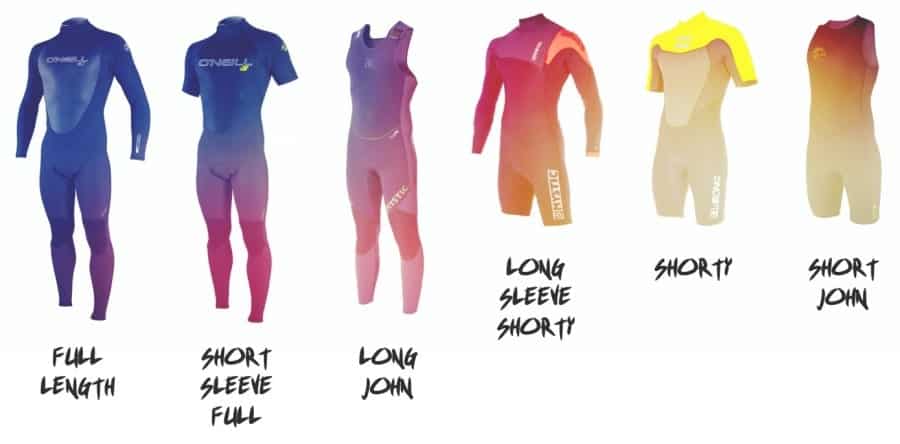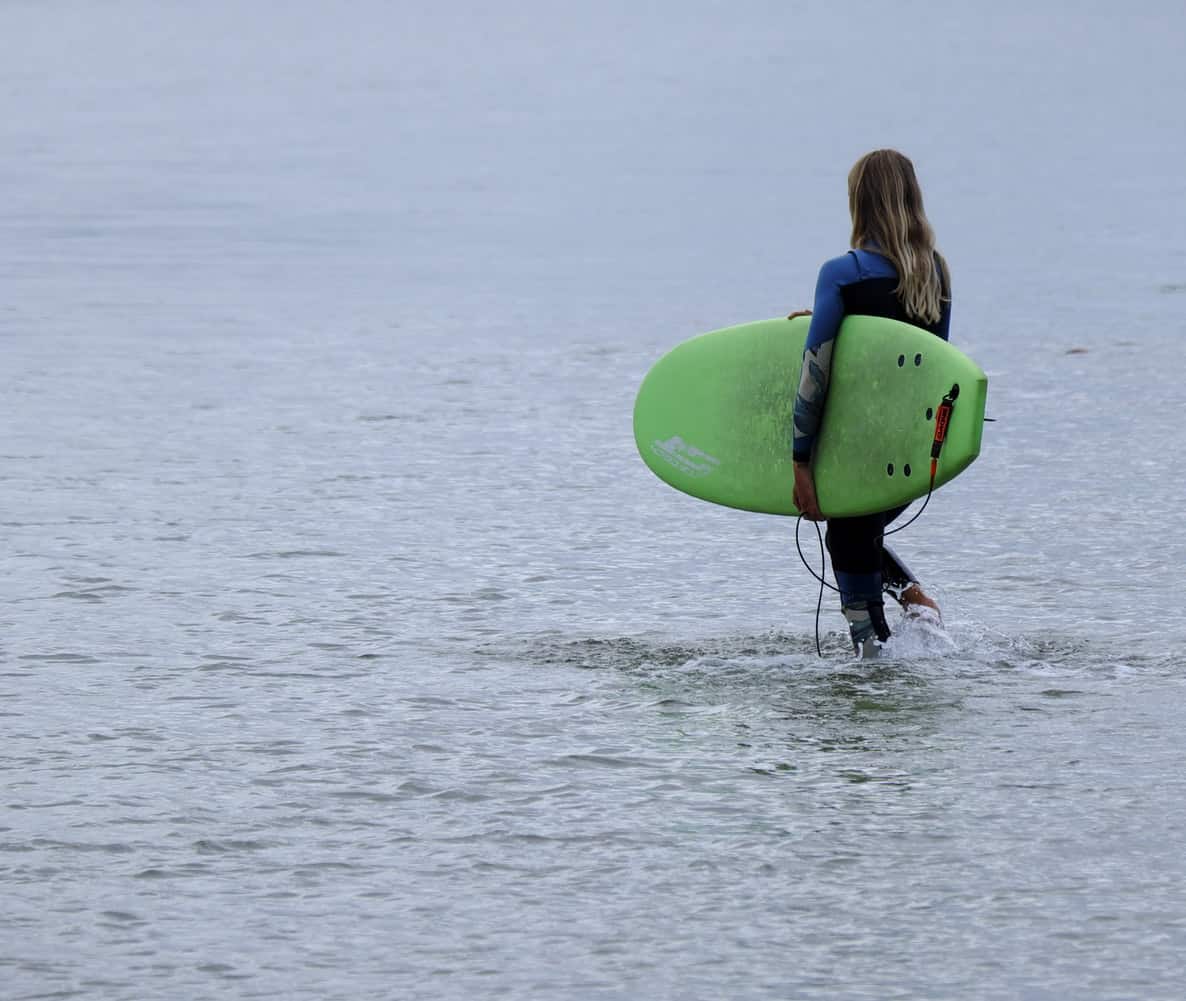Wetsuits are a common and sometimes necessary accessory in surfing. You see surfers everyday zipping up before going out on the waves. Wearing a wetsuit can help keep you warm out on the waves, allowing you to surf longer in cold water.
They also help with buoyancy, helping to keep you floating. But can they keep you from drowning? Although a wetsuit provides slight buoyancy, it is not a floatation device and you can still drown while wearing one.
A wetsuit isn’t a life saving device. If you’re thrown underwater or your leash gets tangled on a reef, you’re still at risk for drowning.
This is why it’s important to know how to swim well and know your limits when it comes to surfing. Never surf alone, make sure there’s a lifeguard on duty, and don’t try to take on waves outside of your skill level.
When it comes to surfing, the purpose of a wetsuit is to keep you warm in cold water. The modern wetsuit was created for this specific purpose back in the early 50’s by Hugh Bradner, a physicist, looking to improve the U.S. Navy’s equipment.
Wetsuits are made out of neoprene, a synthetic rubber known for insulation.The neoprene that wetsuits are made of, allows water into the fabric and holds it there. Your body temperature heats this trapped water, keeping you warm. Neoprene also floats in water.
The thicker the neoprene, the more a wetsuit floats. So, when wearing a wetsuit, you’ll have greater buoyancy than without.
This can be beneficial if you lose your board and need to swim after it. Your suit will aid you in staying above the water. Or if you need a break, you can float on your back a little easier.
But again, a wetsuit won’t protect you from drowning so it’s still important to have good swimming skills when out in the open water.
Pros of Wearing a Wetsuit
Although not a life saving device, there are still plenty of reasons to wear a wetsuit while surfing.
- Stay warm: As mentioned, the primary purpose of wearing a wetsuit is to stay warm. The neoprene of the suit absorbs the water around you, then holds it.
This water is heated by your body temperature, providing a layer of insulation against the cold ocean.
- Floatation: Wetsuits help with floatation. This has to do with the material it’s made of, neoprene. Neoprene weighs less than water when compared at the same volume.
So, this means when placed in water, a wetsuit will float. When you wear a wetsuit, you benefit from this extra buoyancy.
- Skin Protection: Wearing a wetsuit provides a layer of protection for your skin. You don’t have to worry about chafing from rubbing against your board when you wear a wetsuit.
If you wipe out and get hit by your board or some rocks, your wetsuit will add some cushion to keep you from getting scraped up. It also blocks UV rays, helping prevent sunburn.
Cons of Wearing a Wetsuit
While there’s plenty of benefits to wearing a wetsuit, there’s also some negatives.
- Expensive: Wetsuits are an added expense when it comes to surfing, and finding the perfect one can be expensive.
Although there’s a price range, if you’re going to wear a wetsuit, you might as well get a good one that you won’t have to replace and won’t mind wearing
- Not for Swimming: Surfing wetsuits are designed with surfers in mind, so while you will do some swimming in them, they aren’t necessarily meant to enhance swimming.
The armpits and leg joints are thicker than in a swimmer’s wetsuit so you’ll find some restricted movement which you’ll have to get used to.
- Skin Irritation: Although wetsuits provide protection from rubbing against your board, a wetsuit itself can cause skin irritation for some people, especially those with sensitive skin.
Although, manufacturers are designing better materials to help, a well fitted wetsuit will help minimize this risk.
Wetsuit Thickness
Aside from the style of wetsuit, thickness is the most important factor. The thicker the wetsuit, the warmer it is.
Wetsuits range from .5 millimeters all the way up to 6 or 7 millimeters in thickness and have a corresponding water temperature. Surfers usually don’t wear suits all the way up to 6 or 7 as that is usually reserved for diving suits.
When choosing your wetsuit, know the general temperature range of the water you’ll be surfing in to accurately choose the right suit for your conditions.
There’s no point in getting a wetsuit only to find it doesn’t work for your local beach.
Wetsuit thickness is listed by two numbers, for example 3/2 or 4/3. This refers to the thickness of the body and the thickness of the limbs respectively.
Since the core of the body houses all the vital organs, it requires more warmth, thus a thicker material. By having the limbs slightly thinner, your suit will have greater range of motion and be less encumbered by your suit.
Listed is the recommended suit thickness for different water temperatures:
- 65 – 75 degrees F: .5mm – 2/1mm
- 62 – 68 degrees F: 2mm – 3/2mm
- 58 – 63 degrees F: 3/2mm – 4/3mm
- 52 – 58 degree F: 4/3mm – 5/4mm
Types of Wetsuits

When you think of a wetsuit, you probably think of a specific kind of suit, but there’s a whole array of styles. Just like different water temperatures require different levels of thickness for the material, they also require different levels of coverage.
This breaks down what types of wetsuits are out there and what they’re good for.
Vest
A vest style provides the least amount of coverage, just protecting your chest. It’s good for summer days and warm waters.
Generally vests will range in thickness of 1 – 2 millimeters in thickness, since they aren’t made for very cool water. They also provide coverage to the body to prevent rubbing against your board.
Jacket
A jacket is the next level in wetsuit coverage. This suit has added arms to fully cover your upper body.
They range in thickness from 1 – 2 mm as well and are best for warmer water since the bottom half of the body is left uncovered. A jacket or a vest can be used in place of a rashguard.
Short John
A short john wetsuit like a combination of a vest and shorts. It provides protection to the body while leaving the extremities free.
Best for medium to cool water. A short john is perfect for providing warmth to the core, protecting the vital organs, while still moving like you aren’t wearing a wetsuit.
Long John
A long john suit is the same as a short john, except it covers the whole leg instead of just the thigh.
These are good for beaches where the air is warm but the water is cool. Without sleeves, you’ll have a better range of motion for paddling.
Springsuit
A spring suit is similar to a short john, but it has sleeves. A spring suit comes in both short sleeved and long sleeved variations, depending on preference.
Spring suits are so named because they’re good for “Spring” conditions.
They’ll provide more warmth than the previously listed suits but are not meant for very cold water as the legs are still partially uncovered.
Short Arm
A short arm, or short arm steamer as it’s often called, is a full length suit with short sleeves. Most of the upper body is covered, while the whole lower body is totally covered.
This provides more warmth while still leaving your arms relatively unrestricted. This suit is meant for colder water.
Fullsuit
A full suit, as the name implies, fully covers the body, leaving just the head, hands and feet free. This is the most coverage provided by a surfing wetsuit.
Best for winter surfing and otherwise cold waters, they generally range from 3 – 6 millimeters in thickness. This is the best style suit for when you really want to be warm.
However, it will cause some restriction in your paddling due to the long sleeves. In general though, if the water is cold enough to warrant a full suit, the benefits outweigh that con for sure.
Related Questions
Can You Use a Swimming Wetsuit for Surfing?
Along with all the various wetsuits for surfing, there’s also different wetsuits for different activities, like diving suits and swimming wetsuits for triathletes.
Swimming wetsuits are designed to help buoyancy and reduce drag in the water. They tend to be thinner around the armpits to allow for constant rotation while taking strokes and have greater thickness over the hips to help keep them raised in the water.
They aren’t necessarily designed for warmth. Technically, you can surf in a swimming wetsuit, but it’s not really designed for the sport.
Is It Harder to Paddle In a Wetsuit?
This depends on the wetsuit. If you choose a short sleeve or sleeveless wetsuit, paddling will feel the same as when you aren’t in one. If you choose a long sleeve wetsuit, paddling will feel different.
However it won’t necessarily be harder, but it will be something to get used to.

